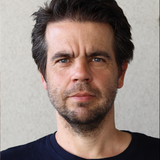Blockchain technology is often described as a distributed logbook, a tool for administration across networks of peers that can keep track of all kinds of transactions and resources. As such, it is often seen as simply a way to make bookkeeping more efficient or transparent. However, new functionalities of the blockchain called ‘smart contracts’ make automated, algorithmic decision-making possible, meaning that this narrow and a-political understanding is no longer sufficient. Blockchains can now do much more than ‘keep track’. Smart contracts turn them into systems of governance, with various kinds of rules and rights hard-coded in their design.
As more and more blockchain projects engage in urban systems such as (local) governments, commons communities, and social entrepreneurship, it is becoming clear that they have much greater consequences and influence social systems in fundamental ways. Blockchain is a technology that presents a veneer of order, but human nature is not neatly categorizable in algorithmic logics. What will urban blockchain governance systems mean for the messy and creative human nature that persists underneath? What might life be like among all these blockchains?





About this Trilogy
This is the first episode of a series of three livecasts around digital ledger design.
Governments and venture capitalists alike are investing in blockchain technologies, hoping for examples to create robust governance systems or to streamline operations. While many blockchains will remain quite invisible to their end-users, many expect that they will be embedded in fundamental public and private systems such as taxation and ID management, and various everyday transportational and transactional processes.
What will these new technological systems mean for how people live together in cities? This online event series brings together researchers, technologists, designers, and artists to explore the social, political, and environmental impact of blockchain technology. Asking important questions about power, access, and transparency throughout, the events each feature a specific perspective:
- The uses of disorder in the blockchain city searches for the human in the machine, featuring designers and researchers that explore the (im)possibilities of human messiness in optimizing blockchain governance systems.
- Values in the blockchain city looks at proposals from researchers, artists and technologists for blockchains designed with solidarity and fairness as core principles.
- Urban commons in the blockchain city grounds the series with real world examples of blockchain projects focussing on sustainable development and the commons.










